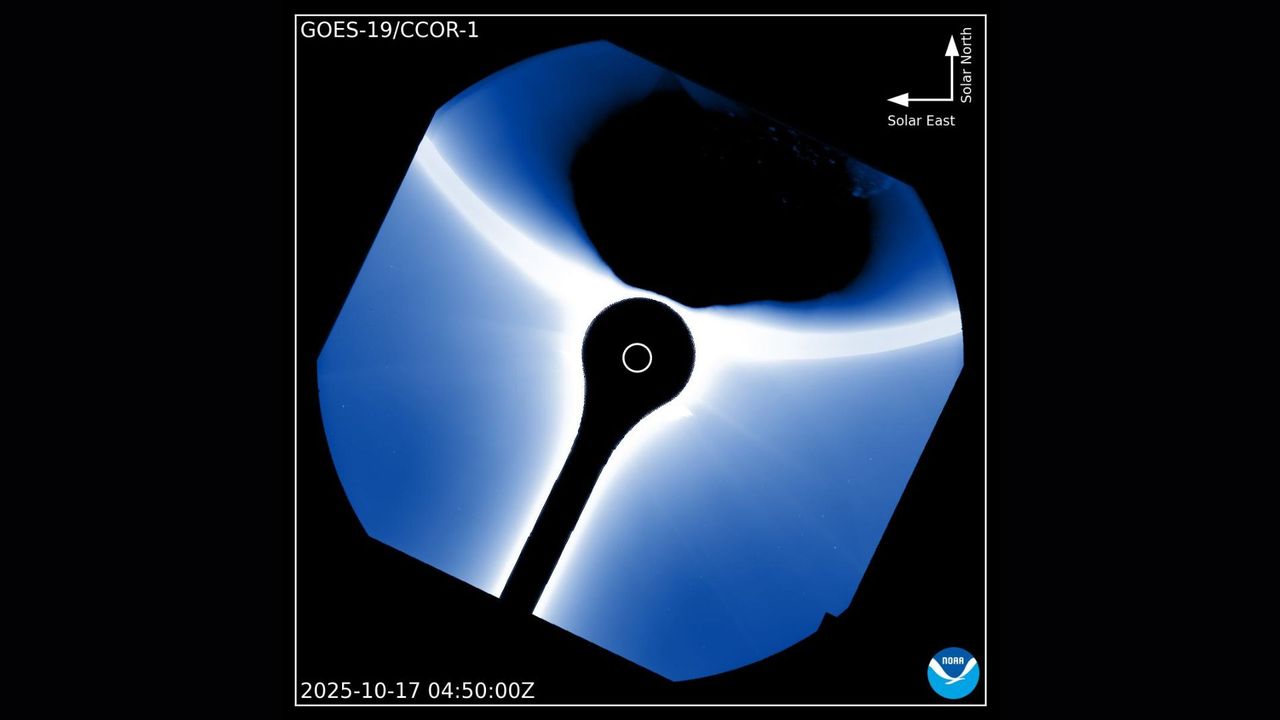A recent satellite image taken by the U.S. National Oceanic and Atmospheric Administration’s (NOAA) GOES-19 has captured an unexpected sight: Earth appearing to “photobomb” the sun. The image was acquired using the satellite’s CCOR-1 coronagraph, which is designed to observe the sun’s outer atmosphere, known as the solar corona. This unique perspective was shared by NOAA’s Space Weather Prediction Center on social media, showcasing our planet silhouetted against the sun’s radiant corona.
GOES-19, which is the latest addition to the Geostationary Operational Environmental Satellite series, was launched in 2024 and became operational in early 2025. It is stationed approximately 22,000 miles (36,000 kilometers) above Earth’s equator, positioned in geostationary orbit. This altitude allows the satellite to maintain a constant view of specific areas on the planet, matching its orbital speed with Earth’s rotation.
The significance of this image lies in the capabilities of the CCOR-1 instrument. It is designed to capture real-time images of the solar corona, which is typically invisible to the naked eye. The corona emits a faint glow and extends millions of miles into space. This region is critical in understanding solar phenomena, such as coronal mass ejections (CMEs), which can release massive bursts of plasma and magnetic energy into the solar system. These ejections can potentially disrupt satellites, power grids, and communication networks on Earth.
While the image may resemble an accidental capture, it actually demonstrates the effectiveness of CCOR-1. The instrument’s sensitivity allows it to detect faint solar structures even when bright objects, like Earth, enter its frame. This occurrence also serves as a valuable calibration tool for scientists, aiding in their understanding of how CCOR-1 manages stray light, reflections, and brightness contrast between celestial bodies.
Scientists and space enthusiasts alike can find this image captivating, as it highlights the ongoing advancements in satellite technology and solar observation. For those interested in learning more about how coronagraphs function and the role of weather satellites, additional resources are available through NOAA and related scientific organizations.
